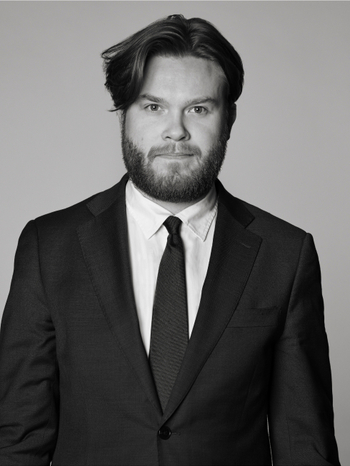Edme Antony Paul Noël
Gladiator (Uno avulso non deficit alter)
Signed T. Noël. Bronze with dark brown patina. Conceived in 1888. Height 100 cm, length 110 cm, width 90 cm.
Muut tiedot
Edme-Anthony-Paul Noël, known as Tony Noël, was a prolific French sculptor. He created busts, bas-reliefs, monumental sculptures, allegorical or mythological figures and orientalist sculptures.
A copy of Noël's sculpture ‘The Gladiator’ was commissioned by the City of Paris in 1884. It was carved in marble and placed in the Champ-de-Mars, 7th arrondissement of Paris. Neither the location nor the work was to last. The sculpture was first moved to Place de Cluny in 1900. Nine years later, for unknown reasons, the sculpture group was broken up and the pieces were deposited for safekeeping in the City of Paris' artwork depot.
Bukowskis would like to thank Martina Björk, PhD in latin, for the following text:
During the reign of Emperor Augustus, the literary work that became the national epic of the Romans was written: the Aeneid. The poet Virgil (70-19 BC) wrote his hexameter work about the Trojan hero Aeneas based on Homer's Iliad and Odyssey. Like Odysseus, he spent 10 years at war in Troy, and like his Greek counterpart, he wandered the Mediterranean and encountered various dangers, including a man-eating Cyclops.
In Carthage, North Africa, Aeneas begins a love affair with Queen Dido, who kills herself when he leaves her. The tragedy is depicted by Henry Purcell in the opera Dido and Aeneas, with the famous aria Dido's Lament. Aeneas must leave Dido because he has a mission from the gods: the foundation of a new city. This city will later become the city of Rome. Aeneas is thus seen as the founder of the Roman Empire and the father of the Romans.
In the sixth song of the Aeneid, Aeneas visits the Sibyl in her cave in Cumae, Sicily. He wants help to descend into the underworld, the realm of the dead, to meet his dead father whom he carried out of burning Troy. To get there, he needs to break off a branch from a golden tree. The Queen of the Underworld, Proserpina, wants it as a gift, says the Sibyl.
Primo avulso non deficit alter, she says. Once the first one is broken, there will be no lack of another. Finding the branch is no easy task, but Aeneas is helped by his mother, Venus, the goddess of love, who sends two doves to lead him to the golden tree. When he cuts off a golden branch, a new one immediately grows.
Once in the underworld, he meets his father, who shows him his future descendants, all of whom are famous Romans. Foremost among them is Emperor Augustus, his descendant in the direct line of descent.
The phrase primo avulso non deficit alter has since come to be used with some distortion, the first word having been replaced by uno, leading to the meaning ‘when one has been snatched away, there will not be another missing’.
The motto was used by the Medici family, as a symbol or guarantor of the survival of the family. A broken branch from a laurel tree with a new shoot, in Italian ‘broncone’, can be seen as the family symbol. If one falls away, it is replaced by a new shoot on the family tree.
But the phrase can also be applied in a non-life-affirming way: if you get rid of one enemy, another will appear in his place. Unsurprisingly, the victorious gladiator is looking backwards; he wants to keep his back clear and fears his opponent.
Perhaps it is something along the lines of the artist Noël's sculpture The Gladiators or Uno avulso non deficit alter.
Killing has no end; there is always someone new to die, while one must fear for one's own life.













































































